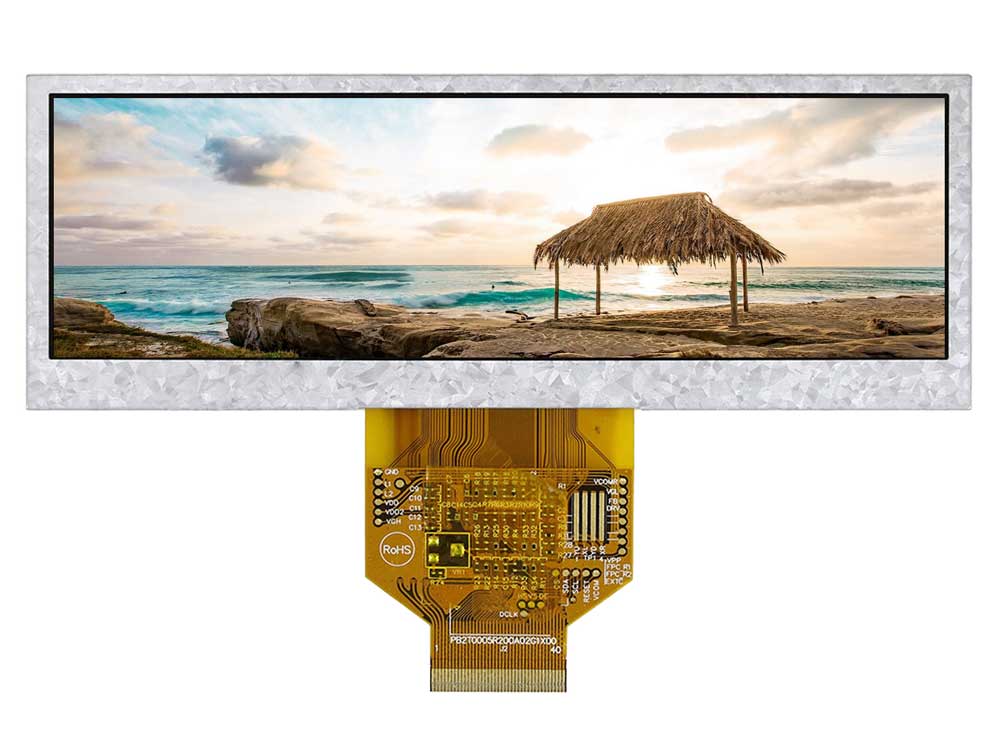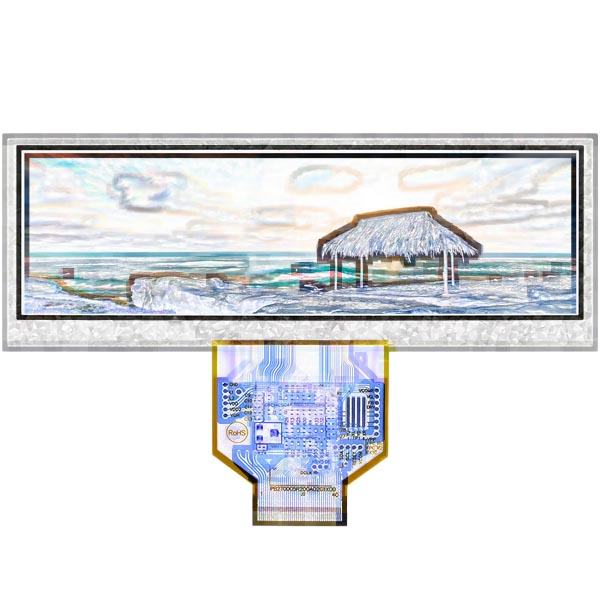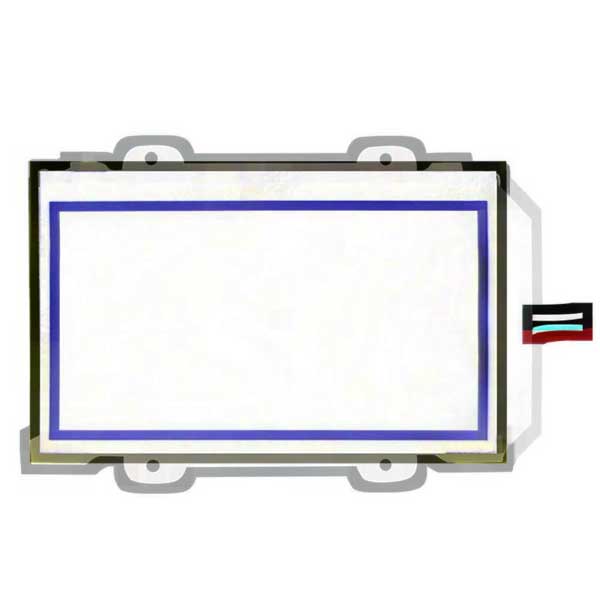Once upon a time, television sets were bulky, had poor picture quality, and were only available in black and white. But as technology evolved, so did our screens.
The introduction of the liquid crystal display (LCD) revolutionized the world of television and brought with it a whole new world of possibilities.
Imagine yourself sitting in front of your television, completely mesmerized by the sharp images, bright colors, and vivid details that you see.
Have you ever stopped to wonder how all of this is possible? How the images and colors are transformed into the pictures that you see on your screen?
If you have, then this post is for you! We are going to embark on a journey to unravel the mystery of LCD technology.
From the building blocks of an LCD screen to the science of how it works, to the evolution of this technology over time.
We’ll explore how LCDs have changed the way we see the world, and how they have become a crucial part of our daily lives.
You see, an LCD is made up of tiny liquid crystals that are sandwiched between two transparent electrodes.
These liquid crystals are responsive to electrical signals, and when an electric current is applied, the crystals realign to change the amount of light that passes through.
This is what makes an LCD screen able to display images. As we delve deeper into the inner workings of the LCD, we’ll discover how different types of LCD screens work, and how they have been adapted for various applications, from televisions to laptops, smartphones, and even medical equipment.
So, come along with us as we explore the magic behind the screen and decode the mystery of LCD technology.
We’ll take a closer look at how things have changed over time and compare the LCD technology of today with that of yesteryear.
By the end of this post, you’ll have a deeper understanding of the LCD and its role in our lives.
Are you ready to embark on this journey of discovery and explore the world of LCD technology? Let’s get started!
1. The magic behind the screen: Decoding the mystery of LCD
LCD technology has come a long way since its introduction. Gone are the days of bulky televisions with poor picture quality, only available in black and white. Today, we are surrounded by LCD screens, from our televisions, laptops, smartphones, and even medical equipment. These screens display crisp images, bright colors, and vivid details that have revolutionized the way we see the world.
But have you ever stopped to think about how all of this is possible? How the images and colors are transformed into the pictures that you see on your screen? Well, the secret lies in the magic behind the screen – the liquid crystal display (LCD).
An LCD is made up of tiny liquid crystals that are sandwiched between two transparent electrodes. These liquid crystals are responsive to electrical signals and change their alignment when an electric current is applied. This changes the amount of light that passes through and ultimately creates the images that we see on the screen.
To understand how an LCD works, it’s helpful to know the basic components that make it up. At the heart of every LCD screen is a layer of liquid crystals. These crystals are specially designed to align in a specific direction when an electrical signal is applied. By controlling the alignment of these crystals, we can control the amount of light that passes through and ultimately create the images that we see on the screen.
In addition to the liquid crystals, an LCD also consists of two transparent electrodes, which serve as the source of the electrical signal. One electrode is placed on top of the liquid crystals, while the other is placed on the bottom. When an electric current is applied to the electrodes, it causes the liquid crystals to realign and control the amount of light that passes through.
So, what makes LCDs so different from other display technologies? The answer lies in the way that light is controlled. Unlike other displays that emit light directly, LCDs work by controlling the amount of light that passes through the liquid crystals. This makes it possible to create high-quality images with a high degree of accuracy and control.
Another advantage of LCDs is that they are very versatile. They have been adapted for a wide range of applications, from televisions to laptops, smartphones, and even medical equipment. This versatility is due in part to the different types of LCD screens that have been developed over time. From twisted nematic (TN) displays to in-plane switching (IPS) displays, each type of LCD screen has its own unique set of advantages and disadvantages.
LCDs are versatile and have many benefits, but there are also drawbacks.
One drawback is that LCDs have a low contrast ratio compared to other display technologies.
This means the difference between the brightest and darkest colors on the display is not big, making it hard to see different shades of the same color.
After all, LCD technology has come a long way since its introduction, and it continues to evolve and improve with each passing day. Televisions used to only be in black and white and were bulky. But now, our screens have improved thanks to LCD technology. When you watch TV or use a laptop or smartphone, take a moment to appreciate the magic behind the screen. LCD technology has made it possible for us to have vibrant and versatile screens. It’s now a crucial part of our daily lives.
2. From liquid to light: A guide to understanding how does LCD work
Have you ever wondered how the pictures on your television, smartphone, and laptop screens are made? Or what the technology behind these screens is? If so, you’ve come to the right place! In this post, we’ll take a closer look at LCD technology and how it works to bring us the images and videos we see every day.
Want to know what an LCD is? It stands for Liquid Crystal Display, a type of screen technology. It uses liquid crystals, placed between two transparent electrodes, to display images. When an electric current is applied, the liquid crystals move to control the amount of light passing through, creating the pictures you see on your screen. Easy peasy!
Now that we have a basic understanding of what an LCD is, let’s look at how it works. When electricity is applied to the liquid crystals, they rearrange themselves to allow or block light from passing through. This rearrangement is controlled by a thin-film transistor (TFT) that acts as a switch for each pixel on the screen. The pixels are the tiny dots of color that make up the images on your screen.
So, how does the light turn into an image on your screen? It all starts with a backlight that shines light through the liquid crystals. The backlight is positioned behind the liquid crystal layer and can be either an LED (Light Emitting Diode) or CCFL (Cold Cathode Fluorescent Lamp). The liquid crystals will either allow the light to pass through or block it, creating the pixels that make up the images.
One of the biggest advantages of LCD technology is its versatility. It can be used in a wide range of applications, from televisions and computer monitors to smartphones, laptops, and even medical equipment. This versatility is since LCDs can be made in a variety of sizes and shapes, making them suitable for a wide range of devices.
However, as with any technology, there are also some drawbacks to consider. One of the biggest limitations of LCDs is that they have a relatively low contrast ratio compared to other display technologies. This means that the difference between the brightest and darkest colors on the display is not as great, making it difficult to distinguish between different shades of the same color.
Despite this limitation, LCD technology has come a long way over the years. With advances in backlighting and the addition of technologies like LED backlights and IPS (In-Plane Switching), LCDs have become brighter, more energy-efficient, and have a wider viewing angle. These advancements have made LCDs a staple in our daily lives and have allowed us to see the world in a whole new way.
Behind, LCD technology has transformed the way we see the world and has become a crucial part of our daily lives. From the early days of black and white televisions to the vibrant and versatile screens of today, LCDs have come a long way and will continue to evolve and change the way we see the world. So the next time you sit in front of your screen, take a moment to appreciate the magic behind the technology and how it brings the images you see to life.
3. The science of seeing: A journey through the LCD
The world of LCD technology is full of fascinating science and engineering. But it can be difficult to understand the inner workings of these screens, especially if you don’t have a background in physics or electrical engineering. But don’t worry, we’re here to make it simple and easy to understand.
Let’s start with a basic overview of how an LCD works. As you may remember from our last subtitle, an LCD screen consists of liquid crystals sandwiched between two transparent electrodes. When an electric current is applied, the liquid crystals realign to control the amount of light that passes through. This change in light transmission creates the images that we see on the screen.
But how exactly do the liquid crystals achieve this feat? It all starts with the fact that liquid crystals have unique optical properties. They can twist and turn in response to an electric field, and this twisting affects the way light passes through them.
The liquid crystals in an LCD screen are arranged in a specific pattern that allows for precise control of the amount of light that passes through. This is achieved by placing a polarizing filter in front of the liquid crystals. The polarizing filter only allows light to pass through in one direction.
Now, when the electric current is applied, the liquid crystals twist and turn, allowing different amounts of light to pass through. By carefully controlling the electric current, the liquid crystals can be made to display various levels of brightness and color.
One of the key components of an LCD screen is the backlight. The backlight is what provides the light that passes through the liquid crystals and creates the images on the screen. Backlights can be made up of a variety of different light sources, including fluorescent lamps, LEDs, and more.
The combination of the polarizing filter, liquid crystals, and backlight creates an intricate dance of light and technology that results in the images that we see on the screen. It’s truly a work of art.
But what about color? How do LCDs produce the vibrant hues that we see on our screens? This is achieved by adding a color filter to the front of the screen. The color filter is made up of red, green, and blue elements, which are known as the primary colors of light. By controlling the amount of light that passes through each color element, an LCD screen can produce an amazing range of colors.
So, there you have it. A basic overview of how LCD technology works and how it brings the images and colors that we see on our screens to life. But there’s still so much more to explore and discover about this fascinating technology. We hope that this journey has piqued your interest and encouraged you to learn more about the science of seeing.
Next time you sit in front of your screen, take a moment to appreciate the incredible technology that is making it all possible. From liquid to light, LCDs are truly a marvel of modern technology.
4. The Building Blocks of an LCD: Discovering the Liquid Crystals
Have you ever stopped to think about the building blocks that make up your favorite LCD screen? The key to the magic behind the screen lies in the tiny, yet powerful liquid crystals.
But what exactly are liquid crystals? To put it simply, they are a special type of substance that lies between a liquid and a solid. They are made up of molecules that are arranged in an orderly fashion, yet are still able to flow like a liquid.
Liquid crystals are placed between two transparent electrodes. When an electric current is applied, the liquid crystals realign. The realignment changes the amount of light that passes through. This is how images and colors appear on the screen.
It’s important to note that not all liquid crystals are created equal. Different types of liquid crystals are used for different applications, such as for displaying images or for use in medical equipment.
One of the key benefits of liquid crystals is that they respond quickly to electrical signals, making them perfect for use in fast-moving images, such as in televisions, laptops, and smartphones.
So, next time you’re watching your favorite show or scrolling through your phone, take a moment to appreciate the building blocks that make it all possible – the liquid crystals. These tiny substances play a big role in bringing the images on your screen to life.
Join us as we dive into the world of liquid crystals and discover the building blocks of an LCD screen. You’ll come away with a better understanding of the technology that makes the magic behind the screen possible.
5. A display of progress: The evolution of LCD technology
Have you ever wondered how your favorite movies, TV shows, and video games come to life on your screen? The answer lies in the evolution of LCD (Liquid Crystal Display) technology. From its humble beginnings to the advanced screens we have today, LCD technology has come a long way in changing the way we see the world.
- LCD technology was first introduced in the 1970s, but it wasn’t until the 1980s and 1990s that it became popular for use in calculators and laptops.
- Before LCDs, the only option for televisions was the bulky CRT technology.
- The first LCD screens were black and white and lacked the vivid colors and brightness we have today.
- Today, LCD technology has improved and is used in a variety of devices, such as smartphones, laptops, TVs, and digital signage.
Advances in LCD technology have led to higher resolutions, clearer images, and brighter screens.
The introduction of OLED technology has brought even more vivid colors, deeper blacks, and a wider viewing angle.
LCD technology has also become more energy-efficient, allowing for longer device usage without worrying about running out of battery.
As you can see, the evolution of LCD technology has been nothing short of amazing. From the early days of monochrome screens to the vibrant and versatile displays of today, it’s fascinating to see how far we’ve come. Next time you use your TV or smartphone, take a moment to appreciate the technology behind the screen. The technology that makes it possible to enjoy your favorite show or play a game is worth appreciating. Don’t forget to acknowledge the magic behind the screen the next time you use your TV or smartphone.
In conclusion, LCD technology has come a long way and will continue to evolve in the future. Who knows what advancements are in store for us? One thing is for sure, the display of progress will continue to amaze and inspire us.
6. How things have changed: A comparison of LCD technology over time
Remember the old days, when you had to squint to see what was on your tiny calculator screen? How about the days of black and white TV screens, or even when you had to sit close to the screen because the resolution was so poor? Well, those days are long gone, thanks to the incredible advancements in LCD technology.
Today, we live in a world surrounded by stunning, high-resolution displays. From the crystal-clear screen on our smartphones to the large, vibrant screens on our TVs, LCD technology has come a long way. So, let’s take a trip down memory lane and see just how far we’ve come.
The first LCD screens were introduced in the 1970s, but they were limited to monochrome displays and had low resolutions. Fast forward to the 1980s and 1990s, and we started to see the use of LCDs in calculators and laptop computers. While the screens were still limited in terms of color reproduction and brightness, they represented a significant improvement over CRT technology.
LCD technology continued to improve over time. More liquid crystals were added to displays, resulting in higher resolution and clearer images. The introduction of backlighting technology made screens brighter and more vibrant, making it easier to use devices in bright surroundings.
Another major change in LCD technology came with the introduction of OLED (Organic Light Emitting Diode) displays. These displays offer even more vivid colors. They are deeper blacks and a wider viewing angle. So they are perfect for use in high-end devices such as smartphones and TVs.
LCD technology has come a long way over time. They are, with constant advancements, leading to better performance and user experience.
One of the recent improvements is the increase in energy efficiency. Now, we can use our devices for longer without worrying about running out of battery. Another improvement is the introduction of TFT (Thin Film Transistor) LCDs. These have greatly enhanced the quality of images and videos. With TFT LCDs, we get fast response times, good color reproduction, and an overall seamless viewing experience.
Finally, from monochrome screens to high-resolution, color-rich displays, the evolution of LCD technology has been nothing short of amazing. So the next time you sit down to enjoy your favorite show on your TV or play a game on your smartphone, take a moment to appreciate just how far we’ve come.
7. A world of possibilities: exploring the different types and applications of LCD screens
Did you know that a vast array of devices utilize LCD technology to display images? From televisions to laptops, smartphones to digital signage, these screens are a common sight. However, not all LCD screens are the same. Each type has its specific features and uses.
Let’s start with the most common type of LCD screen: TFT (Thin Film Transistor). This type of LCD is the one you’ll find in most smartphones, laptops, and other portable devices. The name “Thin Film Transistor” refers to the tiny transistors that control the flow of current to each pixel on the screen. TFT LCDs are perfect for devices that require quick and accurate viewing of images and videos. With high resolution, good color reproduction, and fast response time, you’ll be able to enjoy clear, vibrant, and smooth visuals. TFT LCDs are perfect for entertainment! With high resolution, accurate color reproduction, and fast response time, you can enjoy smooth and enjoyable video games, movies, and social media browsing.
Another type of LCD screen is IPS (In-Plane Switching). IPS LCDs are known for their wide viewing angles, which means you can see the screen clearly from almost any angle. This makes them a great choice for displays that will be viewed by multiple people, such as monitors or televisions. They also offer good color reproduction and high brightness levels, making them ideal for use in bright environments.
Another technology that has gained popularity in recent years is OLED (Organic Light Emitting Diode). OLED displays use a thin film of organic materials that emit light when exposed to an electric current. This allows for deeper blacks and more vivid colors, as well as a wider viewing angle. OLED displays are becoming increasingly popular in high-end smartphones and televisions, where users demand the best possible image quality.
Beyond these common types of LCD screens, there are also specialized LCDs for specific applications. Did you know there are different types of LCDs for specific purposes? Some LCDs are made for medical and industrial uses. These need high contrast and a wide viewing angle for better visibility. There are also transparent LCDs that allow you to see through the screen.
These are perfect for use in retail displays and kiosks, as they show information while keeping the view clear.
Have you ever considered the various ways that LCD technology enlivens our screens? LCDs are everywhere in our lives, bringing images to life on our phones, laptops, TVs, and advertising displays. They offer beautiful visuals that enhance our daily experiences.
Despite all looking alike, there are different types of LCDs, each with its unique properties and functions. The next time you interact with an LCD screen, take a moment to recognize the range and adaptability of this technology. Whether you’re scrolling through social media on your phone or enjoying a film on your TV, there’s an LCD that’s perfect for the task at hand.
References
Chen HW, Lee JH, Lin BY, Chen S, Wu ST. Liquid crystal display and organic light-emitting diode display: present status and future perspectives. Light Sci Appl. 2018 Mar 23;7:17168. doi: 10.1038/lsa.2017.168. PMID: 30839536; PMCID: PMC6060049.
Smith, C. A. (2008). A review of liquid crystal display technologies, electronic interconnection and failure analysis. Circuit World, 34(1), 35-41.
Shieh, K. K., & Lin, C. C. (2000). Effects of screen type, ambient illumination, and color combination on VDT visual performance and subjective preference. International journal of industrial ergonomics, 26(5), 527-536.






